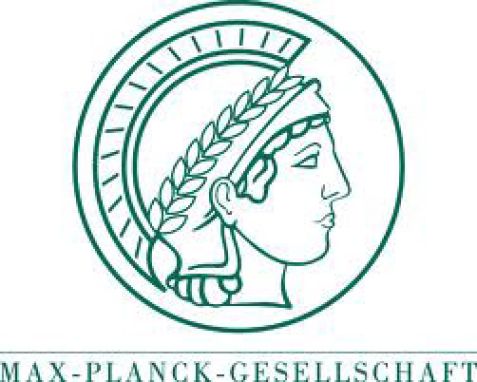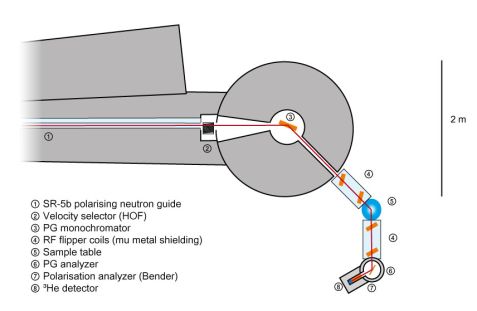MLZ is a cooperation between:
 > Technische Universität München
> Technische Universität München > Helmholtz-Zentrum Hereon
> Helmholtz-Zentrum Hereon
 > Forschungszentrum Jülich
> Forschungszentrum Jülich
MLZ is a member of:
 > LENS
> LENS > ERF-AISBL
> ERF-AISBL
MLZ on social media:

MLZ (eng)
Lichtenbergstr.1
85748 Garching
TRISP (under reconstruction)
Three axes spin echo spectrometer
TRISP is a high-resolution neutron spectrometer combining the three axes and neutron resonance spin echo (NRSE) techniques. The design of TRISP is optimised for the study of intrinsic linewidths of elementary excitations (phonons, magnons) with an energy resolution in the µeV region over a broad range of momentum and energy transfers. Compared to conventional three axes spectrometers (TAS), this corresponds to an improving energy resolution of one to two orders of magnitude.
TRISP also incorporates the Larmor diffraction (LD) technique, which allows the measurement of lattice spacings with a relative resolution Δd/d = 1.5 × 10-6, i.e. one to two orders of magnitude better than conventional neutron or X-ray diffraction. Absolute d-values can be determined by calibrating the instrument against a Si standard. The main applications of LD include thermal expansion under pressure and low or high temperature, and distributions of lattice constants (second-order stresses). LD, thus, is unique in a parameter region where standard methods such as dilatometry fail.
TRISP is currently transferred to the Neutron Guide Hall East.
- Measurement of the intrinsic linewidths of phonons (fig. 2, see gallery) and spin excitations (fig. 3, see gallery)
- Larmor diffraction is used to determine thermal expansion and second-order stresses under pressure and at low or high temperature (fig. 4, see gallery)
Besides the standard sample environment, a dedicated dilution cryostat with a base temperature of 6 mK is available.
- Thermal beam tube SR-5b
- Polarising supermirror bender
- 1.3 Å-1 < ki < 7.0 Å-1
- Velocity selector
- Astrium type, as higher-order wavelengths filter
- PG(002) or (004)
- Variable focussing horizontal and vertical
- PG(002)
- Variable horizontal focussing
- Heusler(111) (polarised neutrons)
- Variable horizontal focussing
- Resonance spin echo, enclosed by mu-metal magnetic screen
Instrument scientists
Dr. Thomas Keller
Phone: +49 (0)89 289-12164
E-mail: thomas.keller@fkf.mpg.de
Prof. Dr. Bernhard Keimer
Phone: +49 (0)711 689-1650
E-mail: b.keimer@fkf.mpg.de
TRISP
Phone: +49 (0)89 289-14816
Operated and funded by

News
Publications
Find the latest publications regarding TRISP in our publication database iMPULSE:
Citation templates for users
In all publications based on experiments on this instrument, you must provide some acknowledgements. To make your work easier, we have prepared all the necessary templates for you on this page.
Gallery





MLZ is a cooperation between:
 > Technische Universität München
> Technische Universität München > Helmholtz-Zentrum Hereon
> Helmholtz-Zentrum Hereon
 > Forschungszentrum Jülich
> Forschungszentrum Jülich
MLZ is a member of:
 > LENS
> LENS > ERF-AISBL
> ERF-AISBL
MLZ on social media:





